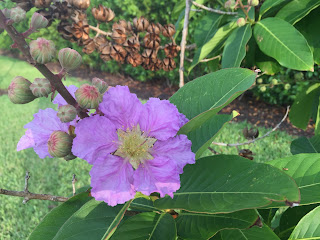Waste To Energy Facility
I would need 5.3 planets in order to provide enough resources to sustain my lifestyle. To support my lifestyle, it takes 23.6 global acres of the Earth's productive area, and 25 tons of carbon dioxide. My ecological breakdown is as follows: service (37%), food (36%), shelter (9%), mobility (7%), goods (11%). I am a quite surprised at what my lifestyle amounted too. I never thought to think how the food I consume contributed to my carbon footprint, especially the way processed food can make these numbers even higher. It never occurred to me how many different aspects of your consumption and lifestyle affected the earth.
A simple way one can reduce some of the resources they use is simply to turn off the lights when they are not using them. Too many times, we don't realize how long we leave the lights on or our TV's on when were not even needing or using them. Another feasible way to reduce our resources is to purchase a reusable water bottle as opposed to continuously buying bottled water. We can recycle these, but how many of our water bottles do we actually recycle? My apartment complex doesn't have recycling bins. A lack of accessibility for me prevents me from recycling as often as I want to. Although not always feasible, it is better to eat locally produced food. In Southwest Florida, there are always farmers markets going on. We can get our local fruits and veggies there, lessening are carbon footprint from shipped veggies/fruits from our grocery stores that requires petroleum fuels and fertilizers.
I was not aware that Lee County managed its waste through a waste to energy facility nor how exactly it worked. However, through this field trip I learned the some of the steps into how waste can actually be transferred into energy. Trucks unload huge amounts of waste into a type of pit, as shown in Figure 3. Then, there is a crane that lifts this waste into a furnace with an extremely high temperature, leaving little possibility for pollutants to be dispersed into the air, as shown in Figure 2. These hot gases then produce a sort of steam. This steam then produces electricity to be used in homes and businesses. It's a complex, systematic process that turns our trash into electricity. It was really interesting learn that even though we are "trashy people," we can turn this negative into a positive. It made me realize how our conventional means of getting rid of our waste, like landfills, can have detrimental effects to our environment because of the release of greenhouses gases from decomposing trash.
Although a waste to energy facility is initially costly to build, it's proven to be worth it in order to reduce our impact on Earth. We're always going to have trash. The issue here is finding ways to dispose it sustainability. As the textbook states, "sustainable consumption has three elements: technology change on the part of companies, behavior change on the part of consumers, and public policy change that provide incentives for both of these changes" (pg. 138). Companies, like the waste to energy facility, are doing there part. However, we also need to address and change our behaviors. As we discussed in class, changing consumption behavior requires changing the culture of our society and the things we value. This field trip definitely alters my perspective of my consumption and how it's disposed of. Before, I had this out-of-sight, out-of-mind mentality. Now, I can see how my trash can have real consequences, especially our E-Waste being shipped to other parts of the country. I am now more aware of how my consumption contributes to a larger problem. Although I am only one person, I am going to try my best to consume less. This culture of materialism has a high price. We need to be more conscious of the ads and marketing tactics that are daily being pushed down our throats. As the book explains, we need to have Media Literacy. "It is important to create critical analysis of the commercial messages that consumers are routinely exposed to...the transition to sustainable cultural practices can only happen if people learn how to critically engage with the media" (pg. 141). I am going to now ask myself, do I really need another shade of nude lipstick? 99% chance, I don't! These are the questions we need to be asking ourselves if we ever want to be part of the change this world needs, not a part of the problem.

Figure 1

Figure 2: This is where our trash gets burned at temperatures as high as 1800 degrees Fahrenheit, according to the LeeGov.com.

Figure 3: A garbage truck disposing our trash into the large, concrete pit to be distributed and burned.
** All photos were taken by me.


Comments
Post a Comment